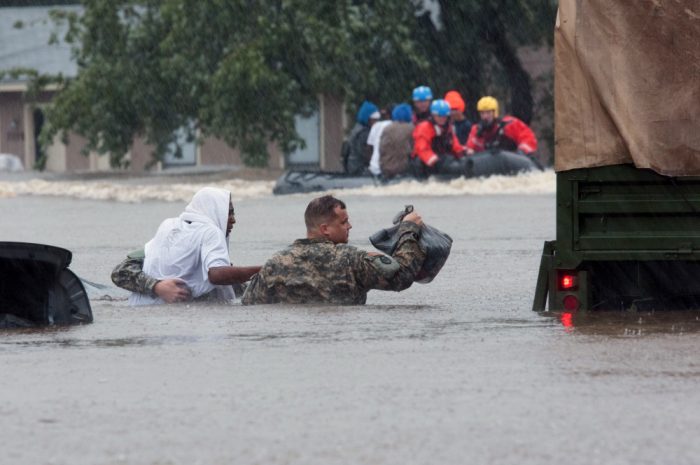When Floods Force Survivors to Choose
When should you stay no matter the odds and when should you move? That’s a question I kept rolling over in my mind as I took the opportunity to join others in a tour of flood stricken West Virginia, organized by Kevin King, executive director of Mennonite Disaster Service (MDS). Due to the hilly terrain, […]
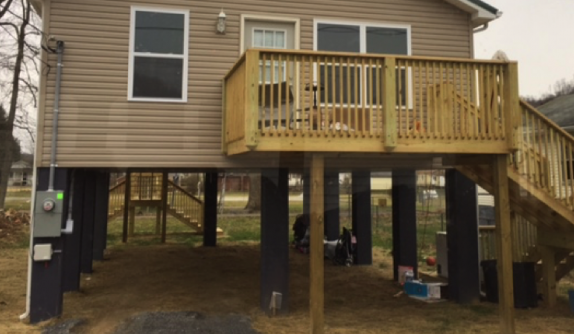
When should you stay no matter the odds and when should you move?
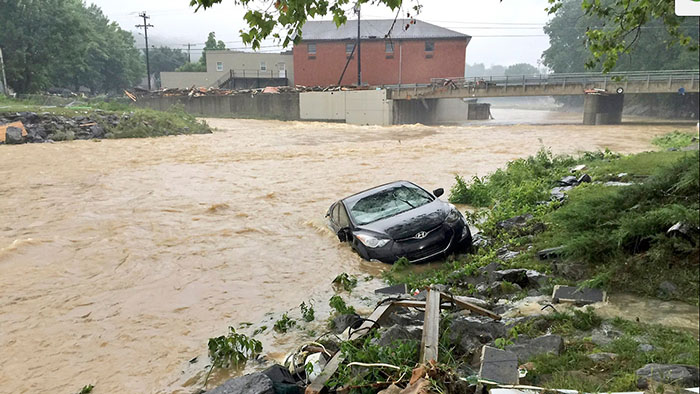
That’s a question I kept rolling over in my mind as I took the opportunity to join others in a tour of flood stricken West Virginia, organized by Kevin King, executive director of Mennonite Disaster Service (MDS). Due to the hilly terrain, making flat land a precious asset, nearly 40 percent of residents live in or near a flood plain, one county executive told me.
There’s no place like home
Many West Virginians hit by floods are determined to stay, no matter the emotional and financial cost. Many live in homes where they grew up; in some cases, they live in homes that have been in their families for generations. They love their communities and are near church, friends, and family. There’s no rational reason that could convince them to move, even when they repeatedly lose everything. For many, the destructive 2016 floods were not the first time they have been hit by rising water.
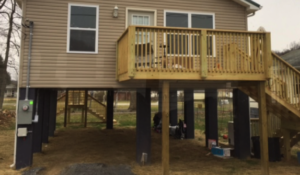 To accommodate those determined to stay, MDS is working to mitigate and protect by raising homes as much as ten or twenty feet above the surface (pictured right). Will this protect them against future floods? Only time will tell, but the odds seem a whole lot better.
To accommodate those determined to stay, MDS is working to mitigate and protect by raising homes as much as ten or twenty feet above the surface (pictured right). Will this protect them against future floods? Only time will tell, but the odds seem a whole lot better.
When enough is enough
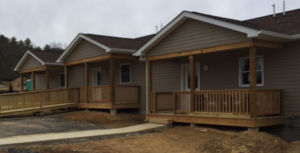 Both the Appalachia Service Project and Homes for White Sulpher Springs, two nonprofit agencies, are building new neighborhoods from scratch (pictured right). These are near former residences, but on high ground with brand new homes and new infrastructure. Residents move in at no cost, with no mortgage. Financing is a mosaic of contributions, donations of products, volunteer labor, and a little federal, state, and local support.
Both the Appalachia Service Project and Homes for White Sulpher Springs, two nonprofit agencies, are building new neighborhoods from scratch (pictured right). These are near former residences, but on high ground with brand new homes and new infrastructure. Residents move in at no cost, with no mortgage. Financing is a mosaic of contributions, donations of products, volunteer labor, and a little federal, state, and local support.
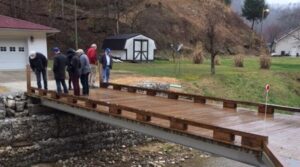 Also, sometimes the problem is not a damaged home, but just getting to it. MDS is also well known for their bridge building for private residences (pictured right), something not covered by FEMA or state reimbursements. Volunteer crews, using mostly donated products, can now build a bridge in a week. So far twenty five bridges have been built , with many more being planned, all at no charge to residents.
Also, sometimes the problem is not a damaged home, but just getting to it. MDS is also well known for their bridge building for private residences (pictured right), something not covered by FEMA or state reimbursements. Volunteer crews, using mostly donated products, can now build a bridge in a week. So far twenty five bridges have been built , with many more being planned, all at no charge to residents.
In a world feeling increasingly alienated and disconnected, it was inspiring to see the expressions of loyalty for home and community. Floods are a way of life in West Virginia. Yet the decision to move or not is complicated with FEMA policies, insurance claims, government regulations, and financial realities. The contributions of generous donors and the volunteers of faith-based organizations give residents a pathway out of their dilemma.
More like this

Historic Winter Storm in Northeast
